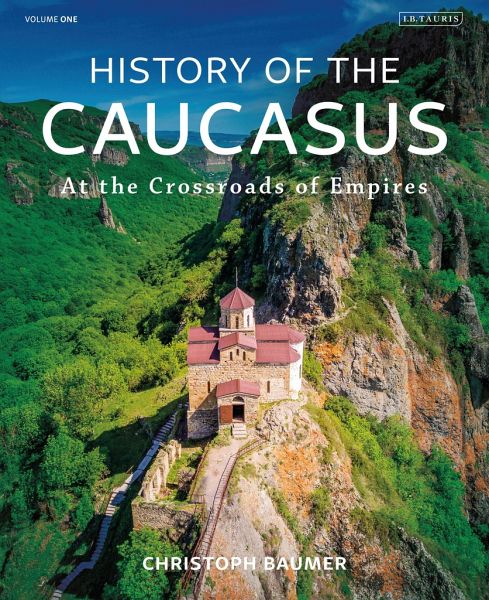
History of the Caucasus
Volume 1: At the Crossroads of Empires
Versandkostenfrei!
Versandfertig in 2-4 Wochen
44,99 €
inkl. MwSt.

PAYBACK Punkte
22 °P sammeln!
"Magnificent [and] wondrous." The Spectator "Rich and illuminating." Literary Review"Phenomenally accurate." History Today "Stunning." The Morning Star"Sweeping." The New European"A wonderful book." Current World Archaeology "In a class of its own." The Caspian PostA landscape of high mountains and narrow valleys stretching from the Black to the Caspian Seas, the Caucasus region has been home to human populations for nearly 2 million years. In this richly illustrated 2-volume series, historian and explorer Christoph Baumer tells the story of the region's history through to the present day. It ...
"Magnificent [and] wondrous." The Spectator
"Rich and illuminating." Literary Review
"Phenomenally accurate." History Today
"Stunning." The Morning Star
"Sweeping." The New European
"A wonderful book." Current World Archaeology
"In a class of its own." The Caspian Post
A landscape of high mountains and narrow valleys stretching from the Black to the Caspian Seas, the Caucasus region has been home to human populations for nearly 2 million years. In this richly illustrated 2-volume series, historian and explorer Christoph Baumer tells the story of the region's history through to the present day. It is a story of encounters between many different peoples, from Scythians, Turkic and Mongol peoples of the East to Greeks and Romans from the West, from Indo-European tribes from the West as well as the East, and to Arabs and Iranians from the South. It is a story of rival claims by Empires and nations and of how the region has become home to more than 50 languages that can be heard within its borders to this very day.
This first volume charts the period from the emergence of the earliest human populations in the region - the first known human populations outside Africa - to the Seljuk conquests of 1050CE. Along the way the book charts the development of Neolithic, Iron and Bronze Age cultures, the first recognizable Caucasian state and the arrival of a succession of the great transnational Empires, from the Greeks, the Romans and the Armenian to competing Christian and Muslim conquerors. The History of the Caucasus: Volume 1 also includes more than 200 full colour images and maps bringing the changing cultures of these lands vividly to life.
"Rich and illuminating." Literary Review
"Phenomenally accurate." History Today
"Stunning." The Morning Star
"Sweeping." The New European
"A wonderful book." Current World Archaeology
"In a class of its own." The Caspian Post
A landscape of high mountains and narrow valleys stretching from the Black to the Caspian Seas, the Caucasus region has been home to human populations for nearly 2 million years. In this richly illustrated 2-volume series, historian and explorer Christoph Baumer tells the story of the region's history through to the present day. It is a story of encounters between many different peoples, from Scythians, Turkic and Mongol peoples of the East to Greeks and Romans from the West, from Indo-European tribes from the West as well as the East, and to Arabs and Iranians from the South. It is a story of rival claims by Empires and nations and of how the region has become home to more than 50 languages that can be heard within its borders to this very day.
This first volume charts the period from the emergence of the earliest human populations in the region - the first known human populations outside Africa - to the Seljuk conquests of 1050CE. Along the way the book charts the development of Neolithic, Iron and Bronze Age cultures, the first recognizable Caucasian state and the arrival of a succession of the great transnational Empires, from the Greeks, the Romans and the Armenian to competing Christian and Muslim conquerors. The History of the Caucasus: Volume 1 also includes more than 200 full colour images and maps bringing the changing cultures of these lands vividly to life.


